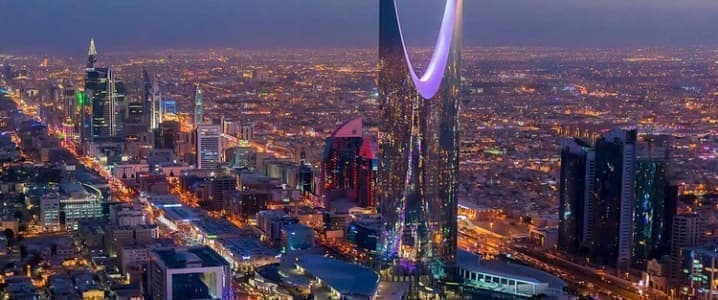Crown Prince Mohammed bin Salman finally saw Saudi Aramco reaching the US$2 trillion valuation he has sought for years.
Yet, this record-breaking valuation, achieved on the second day of trading of Aramco’s stock on the Saudi Stock Exchange last week, doesn’t help the Crown Prince’s efforts to raise more funds for the Vision 2030 to create “a vibrant society, a thriving economy and an ambitious nation.”
Crown Prince Mohammed bin Salman, commonly referred to as MbS, will have to turn to other sources of funds to finance Vision 2030 because Saudi Aramco’s IPO turned out to be a much smaller and predominantly domestic affair compared to the initial grand plans.
If the Saudis want to squeeze more money, and quickly, out of Aramco, they are more likely to turn to the bond market for a huge bond amount of around US$20 billion instead of trying to list the oil giant on a secondary market outside Saudi Arabia, George Hay writes in a Reuters commentary.
Early plans for Aramco’s IPO envisaged listing 5 percent of the oil giant on the Saudi stock market and on a second stock exchange. MbS’s valuation dream of US$2 trillion would have meant that selling 5 percent of Saudi Arabia’s state oil firm would raise as much as US$100 billion for the Public Investment Fund (PIF) for Vision 2030’s reforms to diversify the Kingdom’s economy…wait for it, away from oil.
After years of delays and inability to have a foreign stock market accommodating enough for a company like Aramco with not enough transparency, governance issues with the Kingdom calling the shots, and legal risks if it were to list in New York, the Saudis settled for selling just 1.5 percent of the oil giant on the Saudi stock exchange, Tadawul.
Institutional investors, predominantly Saudi, took most of the 1 percent shares set for institutional investors in the IPO. Saudi Arabia’s government itself sank nearly US$2.3 billion in Aramco’s IPO, according to one of the lead managers of the deal, which was aimed at attracting fresh funds into the Saudi economic diversification. Related: How Clean Is Natural Gas?
Retail investors received the other 0.5 percent of the 1.5 percent in Aramco which the Saudis sold.
This 1.5 percent was enough to make Aramco’s listing the world’s biggest IPO ever, but it was not even close to raising US$100 billion, which was the initial Saudi plan a few years ago.
The IPO raised US$25.6 billion for the Public Investment Fund, and that amount could rise to US$29.4 billion if Aramco exercises in full its 15-percent greenshoe option during the first 30 days of trading.
The Public Investment Fund will also receive billions from Saudi Aramco’s acquisition of 70 percent in chemicals giant Sabic from PIF. Reuters’ Hay assumes it will be around US$25 billion. Another US$27 billion could come to PIF’s coffers if it raids again the foreign exchange reserves of the Saudi Arabian Monetary Authority, Hay says.
The Aramco IPO, the Sabic deal, and a possible tapping into foreign exchange reserves could raise some US$80 billion for PIF. Saudi Aramco can afford to issue debt of around US$20 billion without compromising its debt ratios too much, according to Reuters’ Hay.
So there it is—the US$100 billion to PIF for economic reforms that was supposed to come from the listing of 5 percent of a US$2-trillion Saudi Aramco alone. Related: China’s Electric Vehicle Bubble Has Popped
The fact that MbS has to tap additional sources of funding highlights the difficulties that Saudi Arabia has had in pitching its oil giant to international bankers and investors.
The record-breaking US$2 trillion valuation didn’t come from estimates of international bankers and advisors to the hyped initial public offering. In the IPO process, banks basically snubbed the Crown Prince’s insistence that Saudi Arabia’s crown jewel should be valued at US$2 trillion, and even before Saudi Aramco announced its intention to float, international advisors and bankers had warned that the Saudi oil giant is not really worth US$2 trillion.
True, Aramco’s market value touched the coveted threshold on the second day of trading, but the stock then fell for two consecutive days and it’s not certain at all if it can trade at these levels in the future to give the company a market value of US$2 trillion.
Moreover, analysts say that size is not everything, and corporate governance risks and lack of transparency will continue to weigh on the Kingdom’s oil giant.
Meanwhile, MbS may need to tap the bond market, the forex reserves, or a wealthy Saudi family here and there, to fund his Vision 2030 amid range-bound oil prices which aren’t even close to balancing Saudi Arabia’s budget.
By Tsvetana Paraskova for Oilprice.com
More Top Reads From Oilprice.com:
- Iran Holds End Of Year Fire Sale For Crude Oil
- Why Oil Traders Are More Bullish On 2020
- Texas Is Already Feeling The Shale Slowdown


















There are many ways he can raise the $100 bn he needs to invest in the diversification of the Saudi economy.
With a per capita income of $23,538, Saudi citizens could easily afford to pay for electricity, gasoline and water without subsidies. Eliminating these subsidies could save the Saudi budget an estimated $75-$80 bn a year. Subsidies in general lead to waste and excessive unnecessary use. Moreover, ending the costly war in Yemen could also save an estimated $70 bn per year. The total saved amounts to an estimated $145-$150 bn. Furthermore, the Saudi government got $100 bn from its anti-corruption drive affair in the Ritz Hotel in Riyadh. This brings the total to an estimated $245-$250 bn.
Therefore, there is no need for Prince Mohammed bin Salman to burden the Saudi economy by tapping the bond market nor to sell any shares of Saudi Aramco in foreign markets.
Dr Mamdouh G Salameh
International Oil Economist
Visiting Professor of Energy Economics at ESCP Europe Business School, London